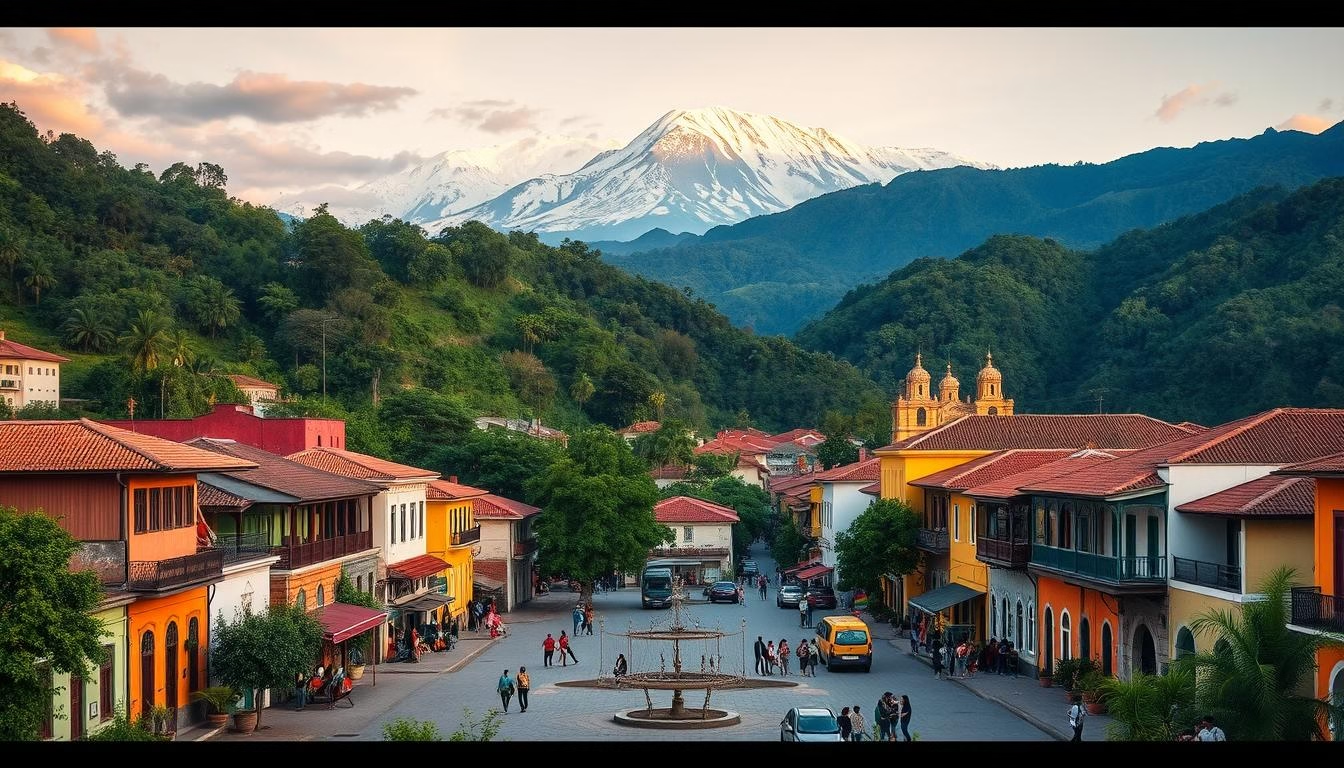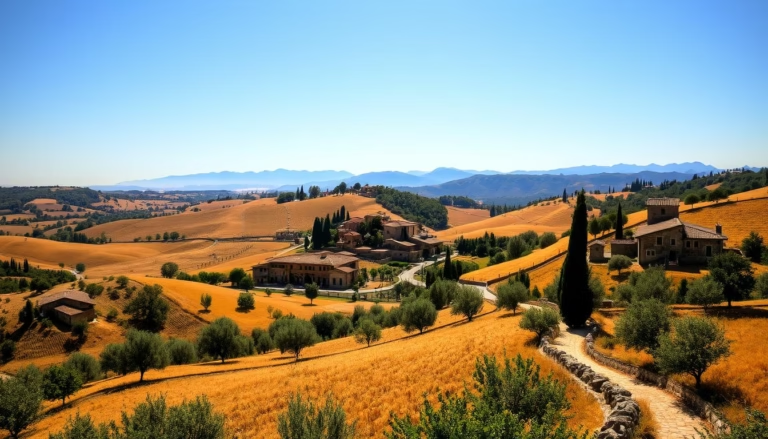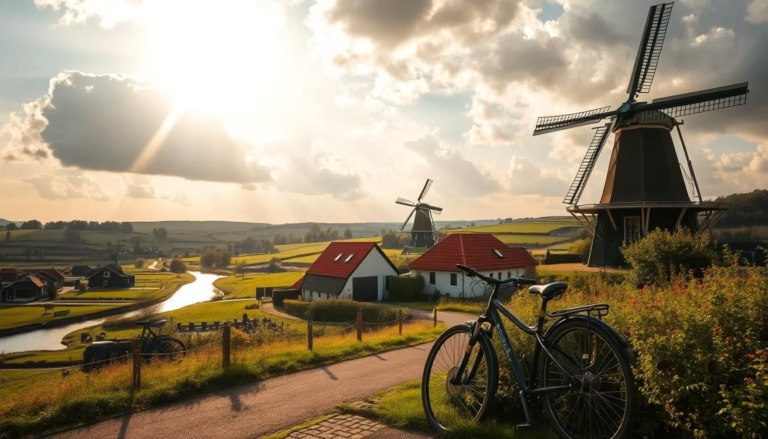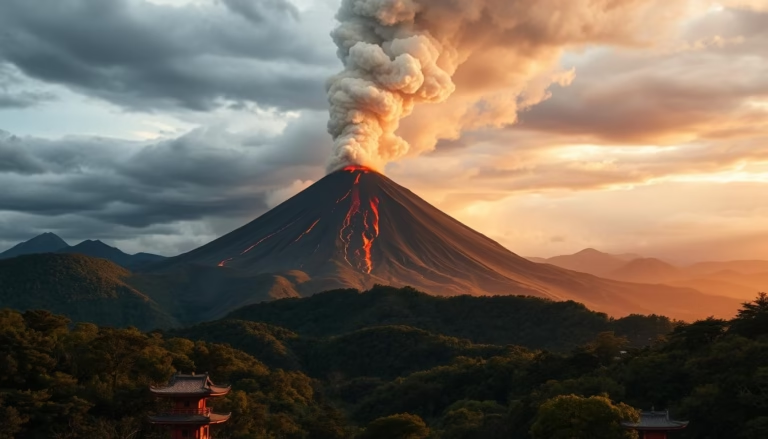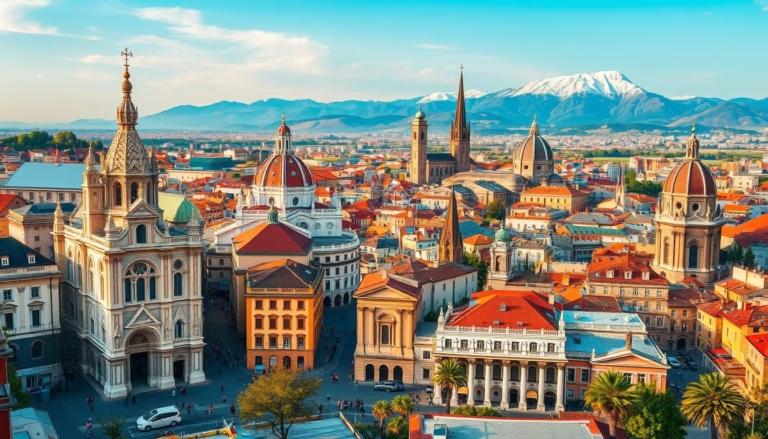Discover the Best Cities to Visit in Colombia
Did you know Colombia’s tourism has grown by 300% since 2006? This South American nation, once overlooked, now dazzles travelers with its mix of lively streets, lush landscapes, and welcoming communities. Its urban centers blend sleek skyscrapers with cobblestone plazas, creating a rhythm that captivates everyone from history buffs to foodies.
Imagine sipping coffee in a Bogotá café surrounded by street art, then hiking Andean trails the next day. Or wandering Cartagena’s pastel walls before diving into Caribbean waves. The country’s geography gifts its hubs with everything from tropical beaches to mountain breezes—no two places feel the same.
What truly stands out is how these destinations balance progress with tradition. Medellín’s futuristic metro cables glide above vibrant barrios, while Cali’s salsa clubs pulse late into the night. Locals greet visitors with smiles, sharing stories that turn trips into meaningful connections.
Key Takeaways
- Colombia’s urban centers combine modern innovation with centuries-old architecture
- Diverse climates range from coastal tropics to mild mountain zones
- Cultural hotspots offer museums, festivals, and culinary diversity
- Efficient public transit systems make exploring easier than ever
- Safety improvements and community projects enhance visitor experiences
Introduction: Unveiling Colombia’s Urban Treasures
Colombia’s urban centers have become unexpected stars in global tourism circles, winning 23 international awards since 2018. These dynamic destinations blend skyscrapers with street vendors selling tropical fruits, creating spaces where contemporary energy meets timeless traditions.
What makes these places unique? The answer lies in their dual personality. You might start your morning touring a cutting-edge innovation district, then share lunch with artisans preserving centuries-old crafts. As local guide María Fernández puts it: “Our cities wear history like a favorite jacket—comfortable, colorful, and full of stories.”
Recent infrastructure upgrades make exploring easier than ever. Efficient metro systems connect vibrant neighborhoods, while pedestrian-friendly zones invite spontaneous discoveries. Safety initiatives have transformed once-overlooked areas into welcoming spaces for cultural exchange.
The real magic happens through human connections. Whether learning salsa steps from a Cali native or discussing coffee brewing methods in Armenia, visitors quickly feel part of the community. This warmth turns every plaza and marketplace into a great place for authentic interactions.
From the Caribbean coast to Andean valleys, each destination serves as a gateway to diverse adventures. Pack your bags for urban explorations that reveal Colombia’s soul—one smile, rhythm, and flavor at a time.
Bogota – The Heart of Colombia
Perched 2,600 meters above sea level, Colombia’s capital city offers crisp mountain air and cultural treasures waiting around every corner. With nearly 12 million locals calling this high-altitude hub home, Bogotá blends metropolitan energy with historic charm.
Exploring La Candelaria and Local Museums
Wander through La Candelaria’s cobblestone lanes, where colonial buildings wear rainbow-colored facades. Street artists transform walls into vivid storytelling canvases, while cozy cafés serve tinto (black coffee) beside plazas buzzing with life.
Don’t miss the Gold Museum, displaying over 34,000 gleaming pre-Hispanic artifacts. A few blocks away, the Botero Museum showcases whimsical sculptures by Colombia’s beloved artist. “These spaces preserve our roots while sparking new ideas,” explains museum guide Carlos Méndez.
Panoramic Cable Car Rides and Hidden Gems
Scale Monserrate’s slopes via cable car for jaw-dropping views of the city sprawled across Andean valleys. Adventurous travelers can hike the steep trail—locals swear the effort makes the arepas taste better at the summit.
Beyond main attractions, explore Sunday markets in Usaquén for handmade leather goods. Foodies flock to Paloquemao Market’s rainbow fruit stalls. For day trips, the underground Salt Cathedral near Zipaquirá reveals stunning illuminated chambers carved into salt mountains.
Cartagena de Indias – The Colorful Coastal Gem
Founded in 1533 as Spain’s treasure port, Cartagena de Indias guards its stories within coral-stone walls. This Caribbean city dazzles with sun-bleached ramparts framing turquoise waters—a living museum where horse-drawn carriages clatter past boutique hotels.
Strolling Through the Walled City
Lose yourself in the maze of Getsemaní’s streets, where bougainvillea spills over balconies painted mango-yellow and passionfruit-purple. Local artist Jorge Márquez describes it best: “Every doorway here hides a secret—maybe a café serving coconut rice, or a courtyard where dancers practice cumbia.”
The UNESCO-protected center reveals surprises at every turn. Peek into the 400-year-old San Pedro Claver Church, then sample fried plantains from street vendors. Don’t miss the Palace of the Inquisition’s grim history exhibits, softened by the building’s candy-pink exterior.
Sunset Walks Along the Historic City Walls
As daylight fades, join tourists and locals on Las Murallas. These 11km of fortifications become prime sunset viewing platforms. Watch fishing boats return to the harbor while street musicians play vallenato rhythms.
The coast reveals its magic after dark. Follow the scent of grilled mojarra to Café del Mar, where cocktails clink against 17th-century battlements. For daytime beaches, hop a boat to Isla Barú’s powder-white sands—just 45 minutes from the old town’s clock tower.
Medellin – The City of Eternal Spring
Nicknamed the “City of Eternal Spring” for its perfect 72°F climate, Medellín blooms with innovation amid flower-filled parks. This urban hub reinvented itself through community-driven projects, becoming a model for social transformation. Locals will tell you the real warmth comes not just from the weather, but from their legendary hospitality.
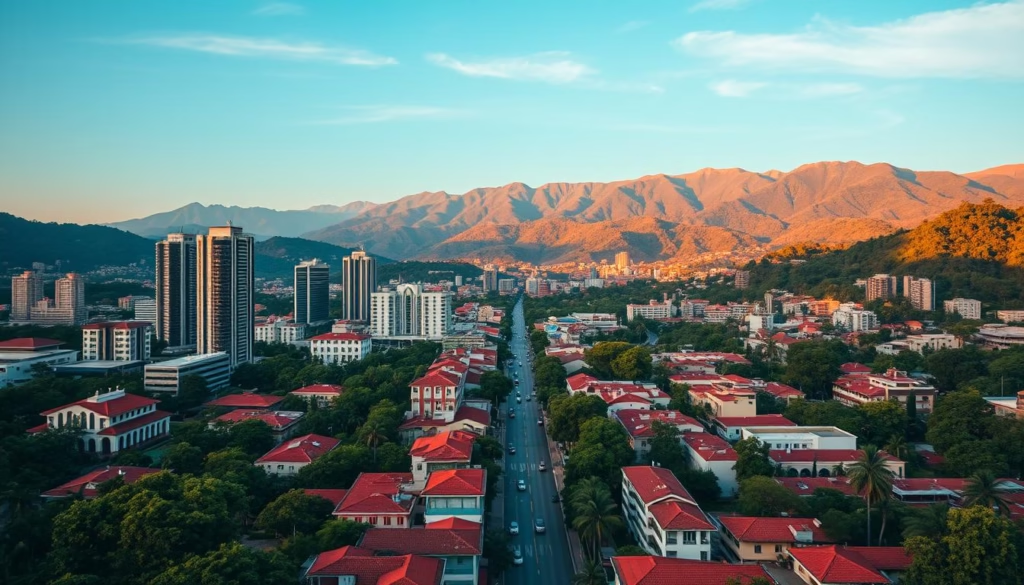
Cultural Transformation and Modern Transit
Medellín’s story of renewal shines through its infrastructure. The Metrocable system connects hillside neighborhoods to the metro below, offering panoramic valley views during your commute. “Our transit isn’t just about movement—it’s bridges between communities,” explains resident Juanita Álvarez.
Art installations dot upgraded public spaces, from Botero sculptures to interactive light displays. The Museo Casa de la Memoria presents powerful exhibits on peacebuilding, while Comuna 13’s escaleras eléctricas (outdoor escalators) symbolize upward mobility.
Local Neighborhoods and Day Trip Adventures
El Poblado buzzes with specialty coffee shops and fusion restaurants, while Laureles charms visitors with its tree-lined avenidas. Both areas showcase how people blend modern living with traditional values.
Adventure seekers can tour Guatapé’s technicolor streets before climbing the 740-step Piedra del Peñol monolith. Coffee plantations near Santa Elena offer hands-on brewing experiences, perfect for understanding Colombia’s bean-to-cup journey.
As sunset paints the Aburrá Valley gold, join locals at Parque Arví for twilight picnics—proof that Medellín’s eternal spring extends beyond meteorology into everyday magic.
Cali – The World Capital of Salsa
When night falls in Cali, the sidewalks transform into dance floors as salsa rhythms pour from open windows. This southwestern hub pulses with energy day and night, its identity inseparable from the rapid-fire footwork that defines local culture. “Here, children learn to move their hips before they can walk,” laughs dance instructor Luisa Ramírez.
Where Rhythm Meets Movement
Over 200 dance academies operate in the city, welcoming everyone from shy first-timers to seasoned performers. La Topa Tolondra sets the standard with live bands and pro dancers twirling between tables. For authentic vibes, Tin Tin Deo’s intimate space lets you watch masters execute lightning-fast pasitos caleños.
| Club | Music Style | Best Time | Specialty |
|---|---|---|---|
| MalaMaña | Classic Salsa | 10 PM-2 AM | Live Orchestra |
| Zaperoco | Salsa Choke | 8 PM-1 AM | Dance Battles |
| El Habanero | Cuban Fusion | 9 PM-3 AM | Mojito Specials |
Flavors That Fuel the Beat
Cali’s food scene matches its dance energy. Start with chontaduro fruit dipped in honey at markets, then try city specialties like sancocho de gallina (chicken stew). Chef Andrés Gómez explains: “Our dishes balance spice and sweetness—just like our music balances passion and precision.”
As dawn approaches, follow locals to late-night clubs serving empanadas vallunas alongside aguardiente cocktails. The connection between plate and dance floor becomes clear—every bite and step celebrates life’s vibrant rhythm.
Santa Marta – Gateway to Caribbean Adventures
Founded in 1525, Santa Marta wears its history like sun-bleached coral – weathered yet vibrant. As Colombia’s oldest surviving city, it blends colonial charm with modern energy where the coast meets the Sierra Nevada mountains. Locals joke that their home is “where flip-flops meet hiking boots,” thanks to its dual identity as beach haven and adventure launchpad.
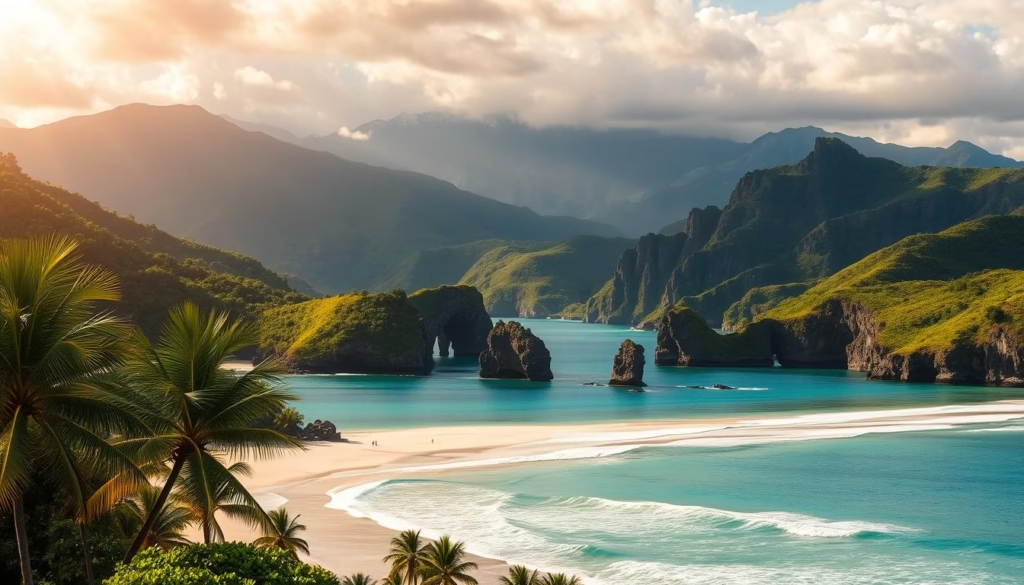
The Lost City trek starts here, a 4-day jungle journey to ancient Tayrona ruins. Guides like Rodrigo Gómez explain: “Walking these trails connects you to ancestors who shaped this land centuries before Columbus.” Closer to town, Tayrona National Park serves up palm-fringed beaches beside rainforests humming with howler monkeys.
Downtown’s revival shines through salsa-spilling bars and ceviche stalls lining revitalized plazas. Don’t miss Quinta de San Pedro Alejandrino, where Simón Bolívar’s final letters still seem to whisper in the mango-scented breeze.
For sunset cocktails, El Rodadero’s beachfront hotels mix modern comfort with ocean views. As night falls, fishermen grill fresh mojarras on makeshift grills while street musicians strum vallenato rhythms – proof that Santa Marta’s magic lives equally in its landscapes and lively spirit.
Bucaramanga – The City of Parks and Connections
Perched at 959 meters in western Colombia’s Santander region, Bucaramanga earns its nickname through 20+ urban green spaces where locals swap stories under tropical trees. The area’s spring-like climate (73°F average) makes outdoor living a way of life—think morning jogs through Parque del Agua’s misty fountains and sunset chess matches in Parque García Rovira.
Nature’s Playground Awaits
Adventure unfolds beyond the city limits. Chicamocha National Park’s canyon trails reward hikers with condor sightings and cable car rides over 2,000-foot drops. Day-trippers love Barichara, a colonial town where artisans craft doors from century-old guayacán wood.
Back in town, the blend of modern energy and small-city charm shines. Families picnic beside Romero Park’s flowering bushes, while food stalls serve hormigas culonas (fried ants)—a crunchy local tradition. Whether exploring for days or passing through, this gateway to Santander’s wonders leaves visitors refreshed and connected to Colombia’s beating heart.
